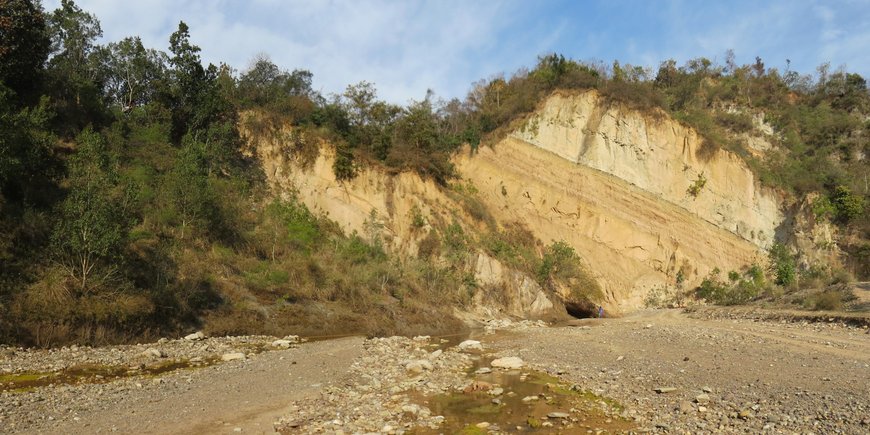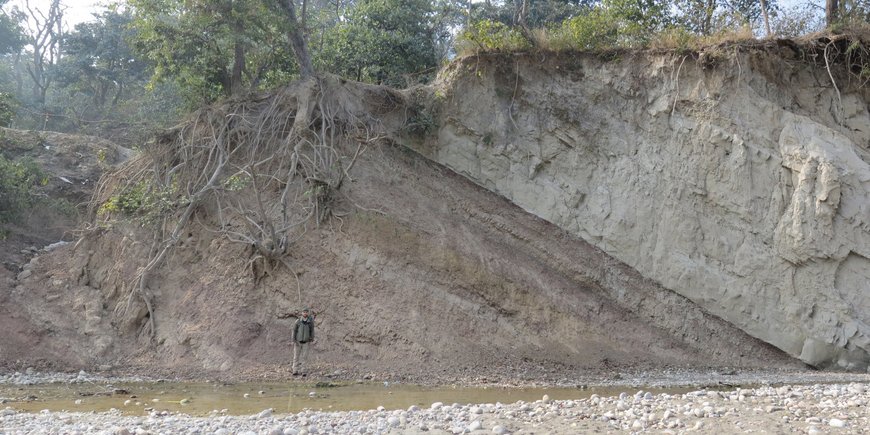Himalayan Paleo-Erosion Rates during the Plio-Pleistocene Climatic Transitions | HIPER
The Earth’s continental topography reflects a balance between tectonics, climate, and their interaction through erosion. Therefore, deciphering the temporal changes in erosion rates is fundamental for our understanding of the impacts of climate change on landscape evolution. The effect of both the global climate cooling during the Cenozoic and the onset of the Quaternary glacial cycles on worldwide erosion rates is a matter of debate. Means to derive direct, high-resolution erosion rates over time periods >1 Ma are poorly developed. Traditional paleo-erosion rate estimates based on sediment budgets have been shown to suffer from systematic biases and other drawbacks. More recently, in situ-produced cosmogenic nuclide inventories in river sediments have been used to estimate erosion rates at the landscape scale. When applied to ancient fluvial sediments in foreland basins, this method has the potential to provide high-resolution paleo-erosion rate chronologies that help assessing landscape response to climatic and tectonic forcing. In HIPER, we investigated Himalayan Foreland Basin (HFB) deposits in northwestern India to constrain a long-term record of Himalayan erosion rates at unprecedented temporal resolution. The focus is on a continuous section of sediments, exposed in the Dehra Dun area in Uttarakhand, that were deposited by the Yamuna River and previously dated by magnetostratigraphy. Paleo-erosion rates for the Plio-Pleistocene sediments will be obtained using in situ produced cosmogenic 10Be. The results will elucidate the response of an unglaciated Himalayan catchment to the Quaternary climatic oscillations, and will thus help predictions of the geomorphic response of the Himalaya to ongoing climate change.
Project members
- Dr. Sanjay Kumar Mandal, Alexander von Humboldt Scholarship holder (now professor at IISER Kolkata)
- Prof. Dr. Dirk Scherler, GFZ Section 3.3 Earth Surface Geochemistry
- Dr. Hella Wittmann-Oelze, GFZ Section 3.3 Earth Surface Geochemistry
Cooperation partners
- Dr. Rolf L. Romer, GFZ Section 3.1 Inorganic and Isotope Geochemistry
- Dr. Anja M. Schleicher, GFZ Section 3.1 Inorganic and Isotope Geochemistry
- Prof. em. Dr. Jean-Pierre Burg, Department of Earth Sciences, ETH Zürich
- Dr. Marcel Guillong, Department of Earth Sciences, ETH Zürich
Time frame
- 2017 – 2018
Funding
- Funded by the Alexander von Humboldt Stiftung
Publications
Mandal, S. K., Scherler, D., Romer, R. L., Burg, J.-P., Guillong, M., & Schleicher, A. M. (2019). Multiproxy isotopic and geochemical analysis of the Siwalik sediments in NW India: Implication for the Late Cenozoic tectonic evolution of the Himalaya. Tectonics, 38, 120–143. https://doi.org/10.1029/2018TC005200.
Mandal, S. K., Scherler, D., & Wittmann, H. (2021). Tectonic accretion controls erosional cyclicity in the Himalaya. AGU Advances, 2, e2021AV000487. https://doi.org/10.1029/2021AV000487.





